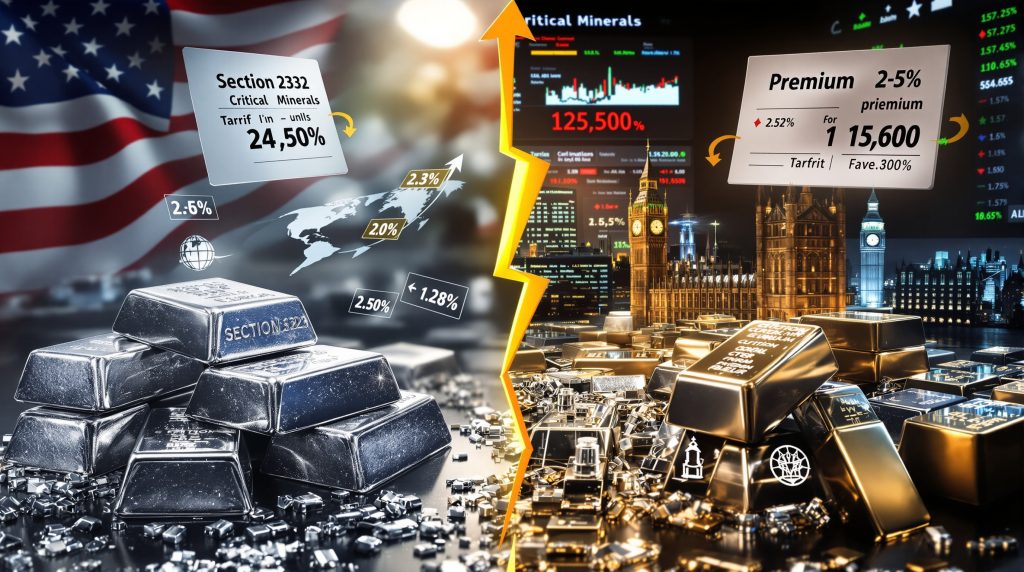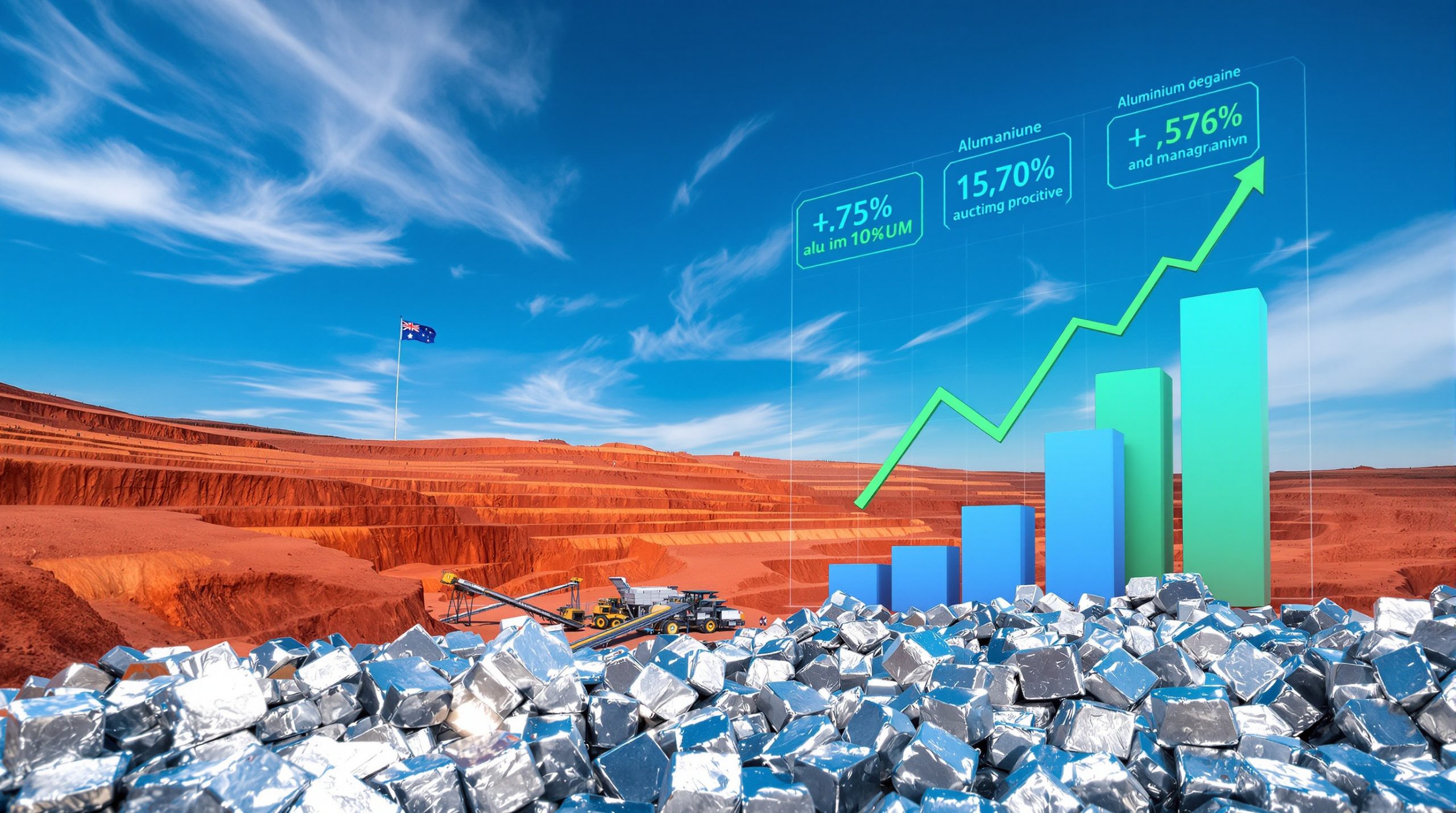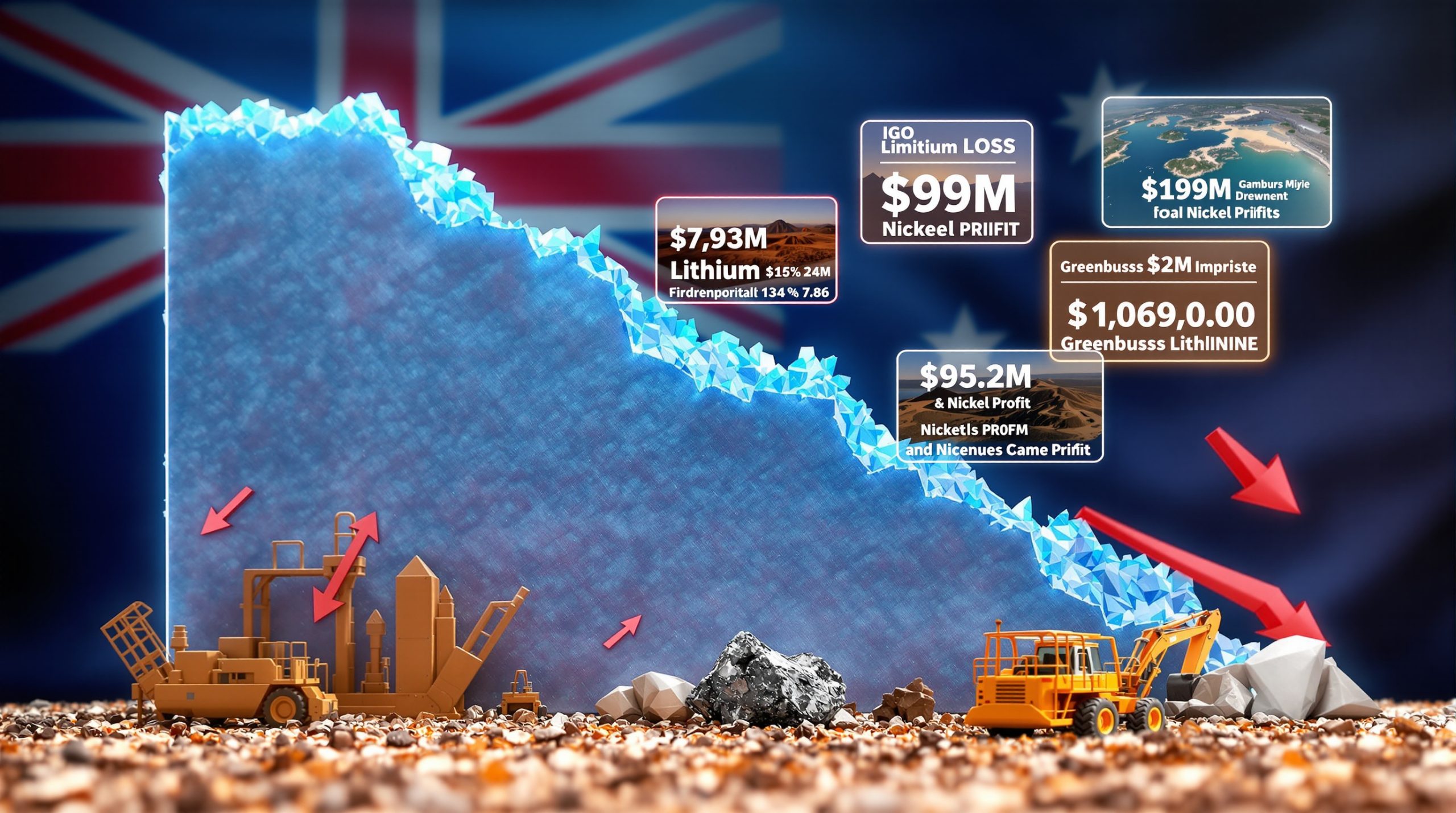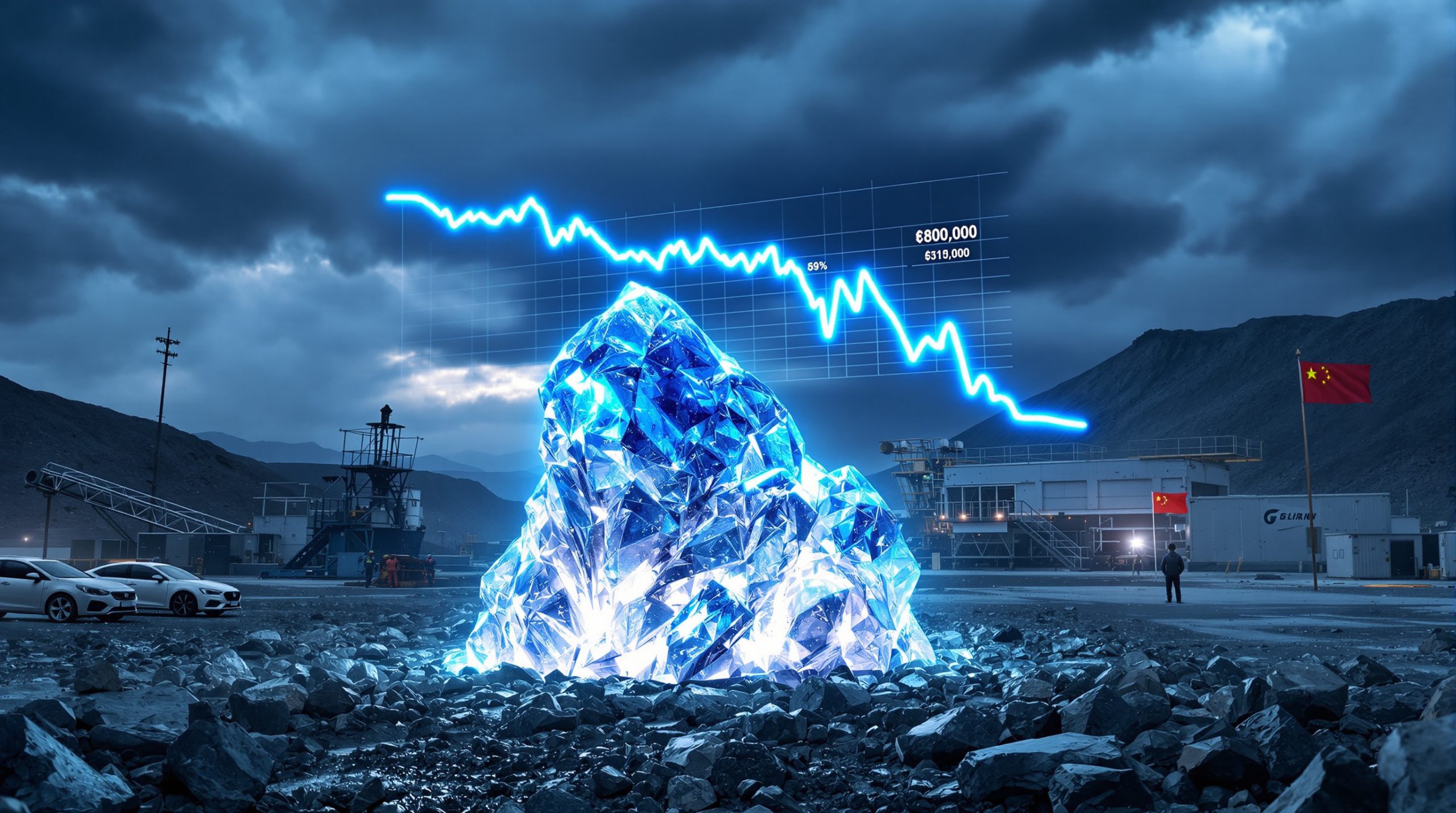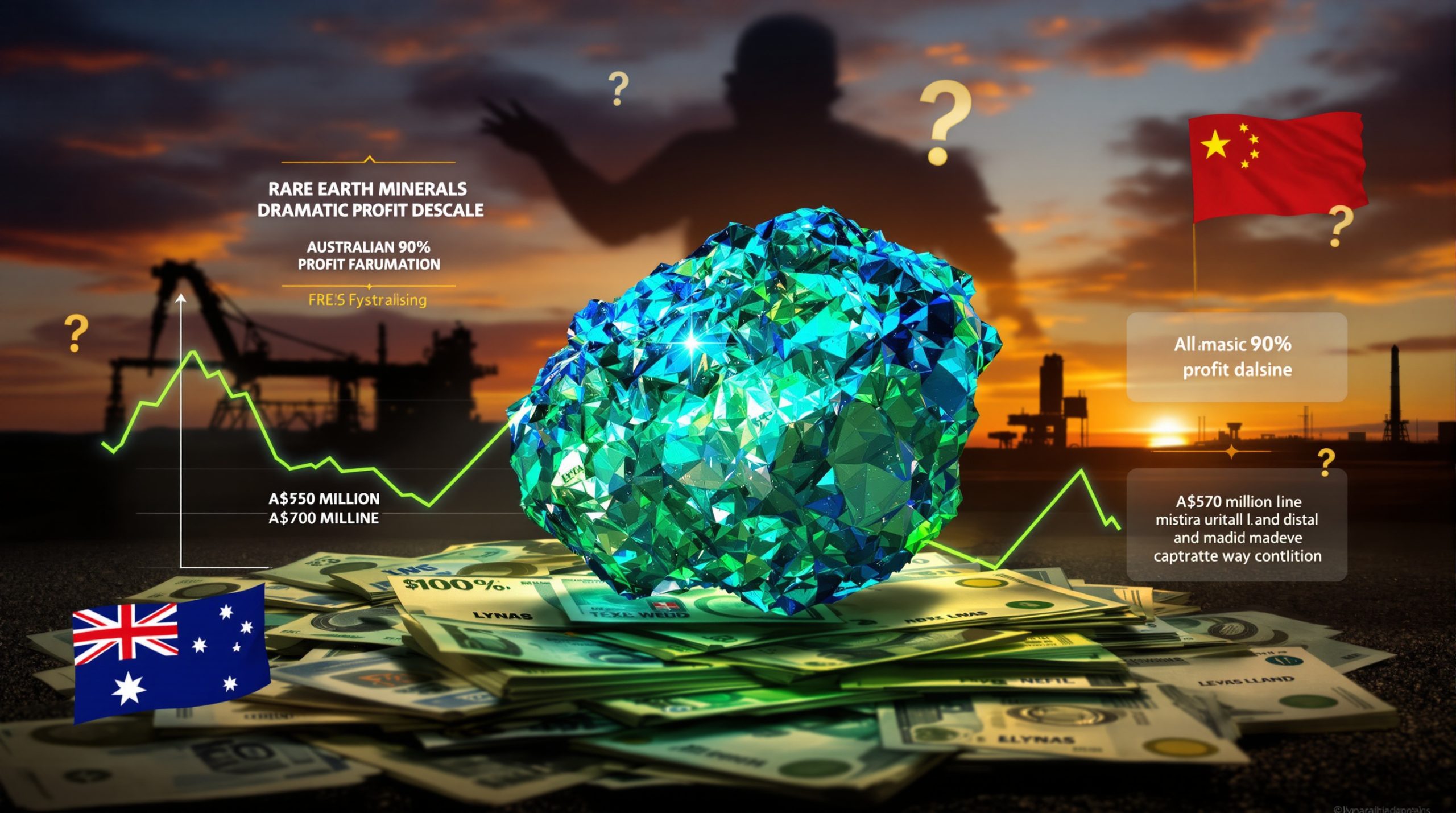How Are US Tariffs Affecting Precious Metal Pricing?
The landscape of US precious metal markets has undergone significant transformation due to evolving tariff considerations. Current market data reveals that palladium and silver are trading at surprisingly modest premiums of just 2-3% in US markets compared to international benchmarks. Financial analysts widely consider this differential insufficient given the substantial Trump tariffs global impact looming on the horizon.
US futures prices for precious metals experienced dramatic surges above London spot prices earlier in 2025, creating substantial profit opportunities for traders who correctly anticipated policy shifts. However, when COMEX-traded forms received formal exemptions in April 2025, these price spreads collapsed dramatically. Market experts now suggest the current premium levels fail to incorporate the genuine policy uncertainty surrounding potential future tariffs impact investment markets.
The narrow gap between US and international precious metal prices represents a significant market mispricing according to leading financial institutions. As one analyst note observed, these metals are "underpricing US tariff risk, currently at just a 2-3% premium to ex-US pricing" – a concerning disconnect that could lead to market volatility when policy announcements materialize.
Current Premium Levels and Market Expectations
The precious metals market has witnessed extraordinary volatility throughout 2025. Early in the year, US futures prices soared above London benchmarks as traders positioned themselves for potential tariff implementation. This created a landscape where strategic market positioning proved highly lucrative for some while devastating for others.
Several factors contributed to this pricing disconnect:
- Initial anticipation of broad metals tariffs drove significant US price premiums
- Formal exemptions in April for COMEX-traded forms triggered premium collapse
- Current 2-3% differential for palladium and silver appears inadequate against policy risk
- Traders correctly forecasting policy movements realized substantial profits
- Market participants who misread policy signals suffered significant losses
The rapid compression of price differentials following April's exemptions created a false sense of security that appears to underestimate renewed tariff risks on the horizon.
Key Factors Driving the Pricing Disconnect
Market observers point to several crucial elements perpetuating the current pricing anomaly:
- The formal exemptions granted in April 2025 specifically applied to certain forms of palladium, platinum, and silver traded on COMEX
- These exemptions created an immediate reduction in price spreads between US and international markets
- Analysts suggest the market is substantially underestimating renewed tariff risks
- Current premiums fail to adequately reflect policy uncertainty, particularly given recent critical minerals energy transition designations
- Historical precedent shows tariff implementation can rapidly widen price differentials
This pricing disconnect presents both significant risks and potential opportunities for market participants who correctly anticipate upcoming policy changes.
What Is the Critical Minerals Designation and Why Does It Matter?
The US government's classification of certain metals as "critical minerals" carries profound implications for trade policy and potential tariffs. This designation identifies resources deemed essential for national security and economic prosperity where the country maintains significant import dependency.
The critical minerals framework provides legal pathways for implementing protective trade measures, including tariffs, to safeguard domestic supply chains and reduce foreign dependencies. For metals like silver and palladium, this designation substantially increases the likelihood of future trade restrictions.
Silver's New Critical Mineral Status
Silver received its critical mineral designation on August 26, 2025, marking a significant shift in its regulatory status. This precious metal now joins 53 other minerals deemed essential for US national security and economic wellbeing. Key aspects of this development include:
- Silver's addition to the critical minerals list represents official recognition of its strategic importance
- The metal is currently undergoing Section 232 review under the Trade Expansion Act
- This review process enables implementation of tariffs on imports considered vital to national security
- A final decision remains pending with the comprehensive report expected in October 2025
- The designation acknowledges silver's essential role in electronics, renewable energy, and defense applications
Industry experts note that silver's critical applications in advanced technology sectors, particularly in electronics, photovoltaics, and medical devices, contributed significantly to its designation. The metal's importance in emerging green technologies further elevated its strategic status.
Palladium's Vulnerable Position
While palladium already held critical mineral status, recent developments have heightened its vulnerability to potential tariff implementation:
- The Commerce Department initiated an anti-dumping investigation specifically targeting Russian palladium
- This investigation, announced in August 2025, represents a parallel pathway for potential tariffs
- Palladium serves as an essential component in catalytic converters for automotive emissions control
- The US maintains heavy import dependency for palladium supply, creating strategic vulnerability
- Analysts predict high probability of tariffs through either the anti-dumping probe or Section 232 review
The dual pathways for potential palladium tariffs – through both Section 232 and anti-dumping investigations – create compounded risk for market participants relying on imported supplies. This unique situation amplifies potential market disruption compared to other metals facing only single-track tariff consideration.
How High Could Potential Tariffs Go?
Financial analysts have provided detailed estimates on potential tariff levels and implementation timelines based on comprehensive assessment of current policy directions. These projections incorporate historical precedent, strategic priorities, and economic considerations to formulate realistic scenarios.
The consensus among market experts points toward substantial targeted tariffs, potentially reaching 50% on certain critical minerals. This aggressive approach would represent a significant departure from previous trade policy frameworks and could dramatically reshape global supply chains for affected metals.
Projected Tariff Scenarios
Based on analysis of policy signals and historical precedent, financial experts project:
- Targeted tariffs potentially reaching 50% on certain critical minerals
- Implementation that could occur immediately or through phased introduction
- A differentiated approach likely based on domestic production capacity potential
- Final determinations expected with the October Section 232 report publication
- Ongoing industry lobbying efforts that may influence final tariff structures
The potential for differential treatment across various critical minerals creates additional complexity for market participants. Metals with greater domestic production potential might face more aggressive tariff protection to stimulate investment, while those with limited domestic alternatives might receive more moderate treatment to avoid disrupting essential industries.
Factors Influencing Tariff Decisions
Several key considerations will likely shape the final tariff determinations:
- Domestic Production Potential: Metals with viable domestic production capacity may receive higher tariff protection to stimulate investment
- Industry Advocacy: Sector-specific lobbying efforts are actively shaping policy positions on different metals
- Strategic Importance: Metals with critical defense or technology applications may receive priority consideration
- Import Dependency Levels: Materials with extreme import reliance face higher tariff probability
- Geopolitical Factors: Supplies from certain nations, particularly Russia, face elevated scrutiny
A leading financial institution noted that "the degree of potential to quickly develop and grow domestic production capacity (and any pro-tariff industry lobbying to this effect) may inform a differentiated approach by metal/mineral." This assessment highlights the complex interplay between economic, strategic, and political factors shaping tariff decisions.
What Are the Market Implications for Investors and Industry?
The looming tariff determinations create a landscape of both significant challenges and strategic opportunities across the precious metals ecosystem. From mining operations to manufacturing industries, these policy shifts could fundamentally alter cost structures, competitive dynamics, and investment priorities.
For investors, the current pricing disconnect between US and international markets presents potential arbitrage opportunities for those correctly anticipating policy outcomes. However, these same disconnects create substantial risks for market participants caught on the wrong side of policy shifts.
Trading and Investment Considerations
Market participants should prepare for several potential developments:
- Heightened price volatility as October tariff decisions approach
- Widening premium spreads between US and international prices if tariffs materialize
- Trading opportunities in futures markets for those correctly forecasting policy decisions
- Potential market dislocations reminiscent of the price surges witnessed earlier in 2025
- Increasing importance of sophisticated hedging strategies for industry participants
The market volatility experienced earlier in 2025 provides a preview of potential disruptions. During that period, traders who accurately predicted policy movements realized substantial profits, while those who misjudged policy directions suffered significant losses – a pattern that could repeat with upcoming tariff determinations.
Supply Chain Impacts
Across industrial sectors, potential tariffs create divergent implications:
- Domestic producers stand to benefit significantly from tariff protection
- Manufacturers utilizing these metals face potential input cost increases
- Companies may accelerate supply chain reshoring initiatives to mitigate tariff exposure
- Research into alternative materials or enhanced recycling programs could accelerate
- Strategic inventory stockpiling ahead of tariff implementation may increase short-term demand
For the automotive sector in particular, palladium tariffs could substantially impact production costs for catalytic converters, potentially accelerating research into alternative catalysts or creating pressure for localized supply chains.
How Does This Fit Into Broader US Trade Policy?
The potential tariffs on silver and palladium represent elements within a comprehensive shift in US trade policy, particularly regarding materials deemed essential for national security and economic prosperity. This evolution reflects growing concerns about supply chain vulnerabilities exposed during recent global disruptions.
The expansion of the critical minerals list and parallel anti-dumping investigations signal a multi-faceted approach to reducing import dependencies across strategic resource sectors. These policies align with broader national security objectives while potentially reshaping global mining investment patterns.
Expanding Critical Minerals Focus
Recent policy developments demonstrate an expanding scope of critical mineral designations:
- Recent additions to the critical minerals list include copper, potash, and silicon alongside silver
- The comprehensive list now encompasses 54 minerals deemed strategically essential
- Policy emphasis has shifted toward securing resilient domestic supply chains
- Heightened scrutiny of import dependencies reflects national security priorities
- Strategic resource sectors face increasing protection under this policy framework
This expanded framework represents a fundamental reevaluation of which materials qualify for strategic protection. By broadening the critical minerals definition to include more widely traded commodities like copper and silver, policymakers have significantly expanded the potential scope of trade interventions.
Geopolitical Dimensions
The tariff considerations carry significant geopolitical implications:
- The specific focus on Russian palladium through targeted anti-dumping investigations reflects broader geopolitical tensions
- Mineral dependencies on potentially adversarial nations face increased scrutiny
- Trade policy increasingly aligns with national security objectives
- International trading partners may implement retaliatory measures
- Global mining investment patterns could shift toward politically stable jurisdictions
The dual-track approach to Russian palladium – through both critical minerals designation and anti-dumping investigations – highlights how geopolitical considerations increasingly influence trade policy formulation in strategic sectors. According to Bloomberg analysis, these policy shifts are already influencing global market patterns, particularly as precious metals respond to policy uncertainty.
FAQs About US Tariffs on Silver and Palladium
What is Section 232 of the Trade Expansion Act?
Section 232 of the Trade Expansion Act provides the legal framework authorizing the US government to investigate whether certain imports threaten national security. If such threats are identified, the legislation enables implementation of tariffs or quotas as protective measures. The current review of silver and other critical minerals operates under this provision, with final determinations expected in October 2025.
The Section 232 process involves a comprehensive investigation by the Department of Commerce, including public hearings and stakeholder input, before submitting recommendations to the President. This structured approach provides legal justification for tariff implementation while allowing for industry consultation.
Why was silver recently added to the critical minerals list?
Silver received its critical mineral designation in recognition of its essential role across multiple strategic sectors:
- Advanced electronics rely heavily on silver for conductivity applications
- Renewable energy systems, particularly photovoltaics, require significant silver inputs
- Medical applications depend on silver's antimicrobial properties
- Defense technologies utilize silver in numerous sensitive applications
- The designation acknowledges US import dependency for this strategic metal
The critical mineral classification reflects growing recognition that silver transcends its traditional precious metal role to serve as an industrial metal essential for next-generation technologies and strategic applications. This shift has important implications for the gold price forecast as well, with analysts noting significant correlations between precious metal pricing trends.
How might palladium tariffs affect automotive prices?
Potential palladium tariffs could create cascading effects through automotive supply chains:
- Catalytic converters typically contain between 2-7 grams of palladium depending on vehicle type
- These components represent a significant portion of emissions control costs
- Manufacturers may initially absorb some cost increases to maintain competitiveness
- Extended tariffs could eventually necessitate price increases passed to consumers
- Higher costs could accelerate research into palladium alternatives or recycling initiatives
If tariffs reach the projected 50% level on certain imports, the automotive industry would face difficult decisions balancing compliance costs, consumer pricing, and technological alternatives. Recent analysis from Mining.com suggests US premiums for these metals may be significantly underpriced given the policy uncertainty ahead.
What alternatives exist if tariffs significantly increase metal prices?
Industries affected by substantial tariff-driven price increases would likely pursue multiple mitigation strategies:
- Accelerated research into material substitution possibilities
- Enhanced recycling programs to recover metals from end-of-life products
- Development of new domestic mining projects to reduce import reliance
- Establishment of strategic stockpiles to buffer short-term supply disruptions
- For palladium specifically, platinum substitution in catalytic converters might become economically viable despite technical challenges
These adaptive responses would unfold over different timeframes, with substitution and recycling representing medium-term solutions while domestic production capacity would require longer development horizons. The Trump critical minerals order provides additional policy framework supporting domestic production expansion.
Ready to Invest Ahead of Metal Tariff Impacts?
Don't miss opportunities in precious metals as US tariff decisions approach. Discover real-time alerts on significant ASX mineral discoveries through Discovery Alert's proprietary Discovery IQ model at https://discoveryalert.com.au/discoveries/ and position yourself ahead of market movements.
